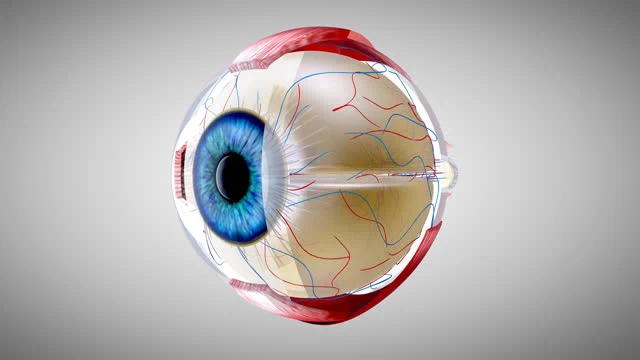The YouTube video titled “What Happens Inside Your Eyes – 3D Animation” provides an overview of how we see. It explains that light first encounters an object and, while some of it is absorbed, much of it is reflected back towards the eye. The reflection enters the eye through the pupil, which is not black but a hole with no light inside. Light that passes through the pupil hits the iris, which can constrict or relax depending on light conditions. The lens, located behind the iris, focuses the light onto the retina, the only part of the eye that can be seen. With over 2 million working parts, the eye is capable of seeing a wide range of colors and details. The lens inverts images, which is why we see the world before us. The video then discusses the rods and cones in the eye and their roles in seeing colors and shades of gray. Photoreceptors can even project images when they’re not present. The rods and cones are connected to neurons, which allow data to travel from the eye to the optic nerve, where the main paths to the brain enter and exit. Finally, the speaker touches on the blind spot, a location in the optic nerve with no rods or cones. The video also shows how the brain fills in missing information and translates the upside-down image into something we understand.
- In this section of the video, the presenter explains the process of how light enters the human eye to allow us to see. The journey begins with light striking an object, some of which is absorbed and some reflects back towards the eye. The reflection enters the eye through the pupil, which is not a black hole in the eyeball as commonly thought, but a hole with no light inside. Light that passes through the pupil hits the iris, which can contract or relax depending on the light conditions. The lens, which is located behind the iris, focuses the light onto the retina, which is the back of the eye and the only part of the eye that we can see. The lens is the same size as a human nose and ears and grows throughout a person’s life. Over 2 million working parts are located within the eye, which allows us to see a wide range of colors and details. The lens also causes images in the eye to flip upside down, which is why we see the world as it is before us.
- In this section of the video, the speaker explains the function of the rods and cones in the human eye. Rods are responsible for picking up black, white, and shades of gray, while cones are responsible for seeing color. The speaker also mentions the photoreceptors in the eyes, which can even project an image when it’s not even there. The rods and cones are connected to neurons, which allow the data to make its way to the optic nerve, where blood vessels and the main paths to the brain enter and exit the eyeball. The blind spot is also discussed, which is located in the area of the optic nerve where there are no rods

